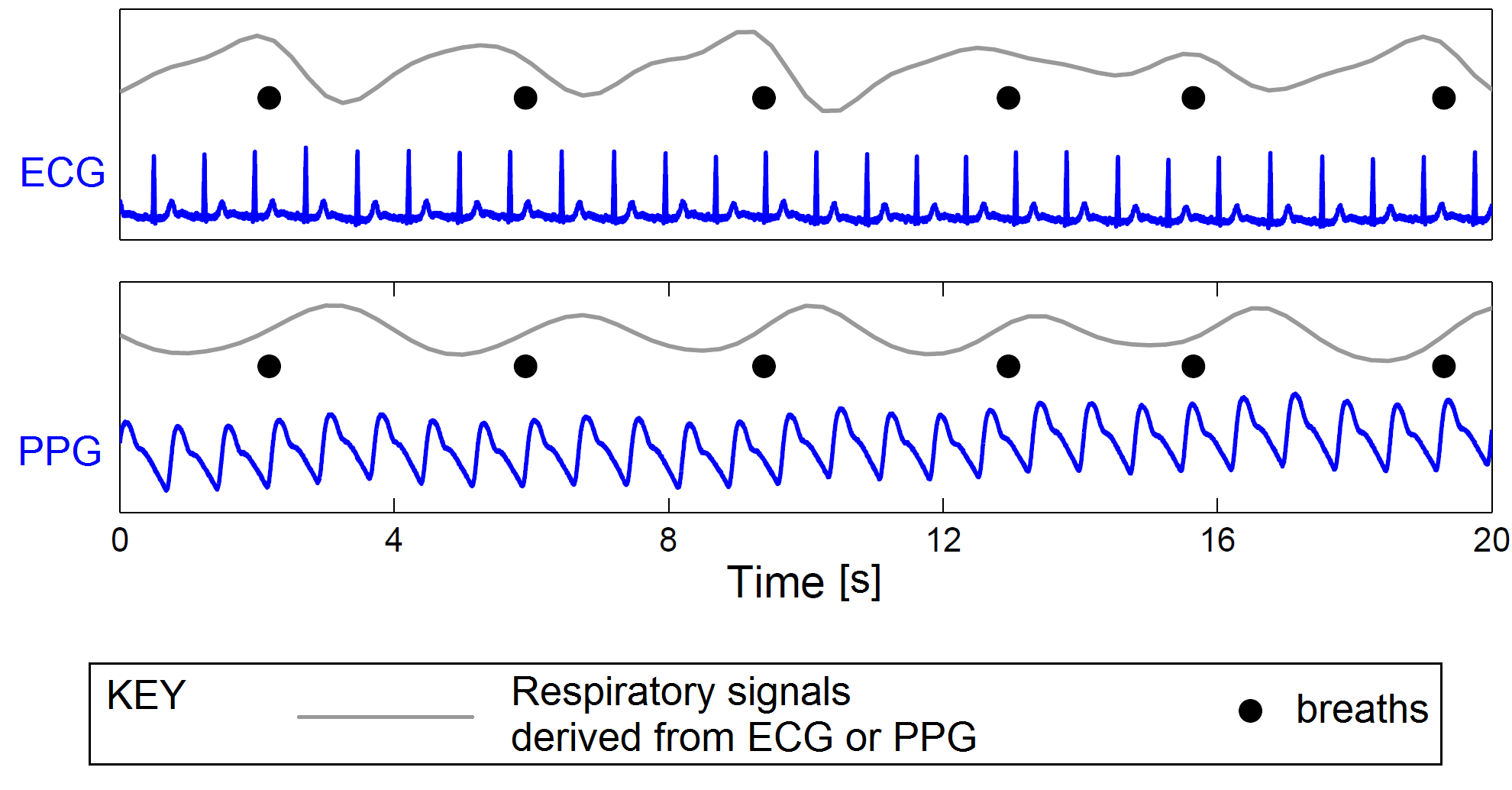Background
Respiratory rate is a widely used indicator of health, used by clinicians in conjunction with other parameters to assess the health of patients in hospitals, clinics, and the community. For instance, all acutely-ill hospital patients have their respiratory rate measured every few hours to facilitate early detection of clinical deteriorations (deteriorations in health). However, respiratory rate is usually measured manually, by counting the number of breaths a patient takes in a specific period of time, such as a minute. This can potentially be time-consuming and inaccurate.
An alternative solution could be provided by developing an automated, electronic method for measuring respiratory rate using a device. To this end a plethora of algorithms have been proposed to estimate respiratory rate from several physiological signals, such as the electrocardiogram, photoplethysmogram, accelerometry signal, impedance pneumography signal, and so on. These signals can be easily measured, and in some scenarios are already measured for other purposes. Consequently, a robust, practicable algorithm for estimating respiratory rate from these signals could potentially benefit patients and healthcare providers alike.
